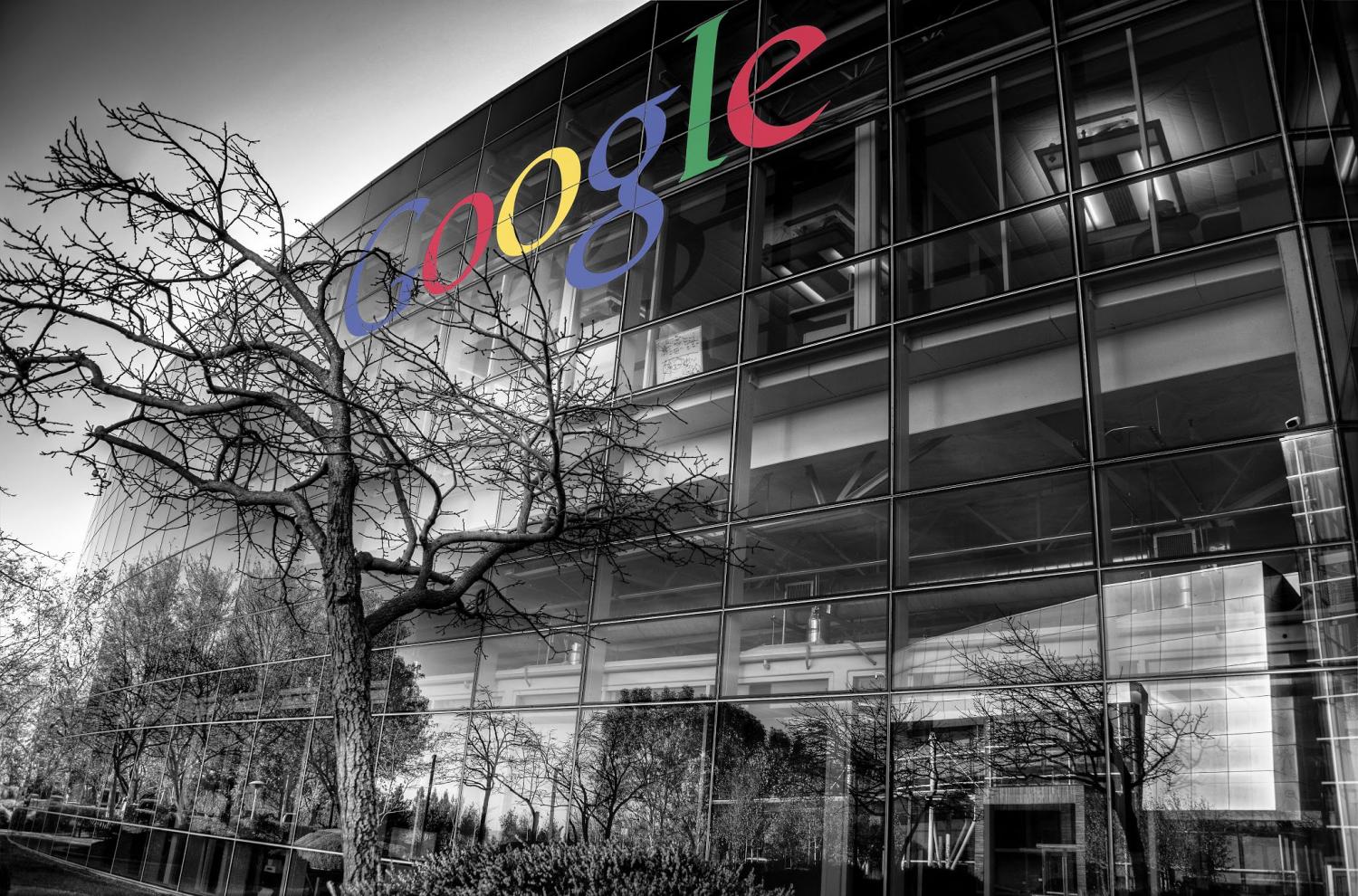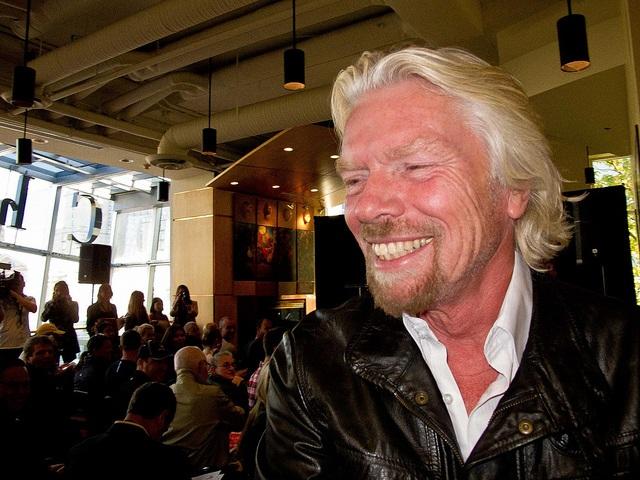Editor's Note: This post originally appeared on Shareable.
By Neal Gorenflo
We have an epic choice before us between platform co-ops and Death Star platforms, and the time to decide is now. It might be the most important economic decision we ever make, but most of us don't even know we have a choice.
And just what is a Death Star platform? Bill Johnson of StructureC3 referred to Uber and Airbnb as Death Star platforms in a recent chat. The label struck me as surprisingly apt: It reflects the raw ambition and focused power of these platforms, particularly Uber.
Uber’s big bet is global monopoly or bust. They’ve raised over $8 billion in venture capital, are on track to do over $10 billion in revenue this year, and have over 1 million drivers who are destroying the taxi industry in over 300 cities worldwide. They’ve done all this in just over five years. In fact, they reached a $51 billion valuation faster than Facebook, and plan to raise even more money. If they’re successful, they’ll become the most valuable startup in history. Airbnb is nearly as big and ambitious.
Platform co-ops are the alternative to Death Stars. As Lisa Gansky urged, these platforms share value with the people who make them valuable. Platform co-ops combine a cooperative business structure with an online platform to deliver a real-world service. What if Uber was owned and governed by its drivers? What if Airbnb was owned and governed by its hosts? That’s what an emerging movement is exploring for the entire sharing economy in an upcoming conference, Platform Cooperativism.
Shareable helped break the platform co-op story last year in a Nathan Schneider feature entitled, “Owning is the New Sharing” along with Trebor Scholz of the New School. These two thought leaders, also the conference organizers, identified a wave of platform co-ops forming, but we’re still in the early days.
What forces are driving the rise of Death Star platforms? And what’s at stake?
Uber signifies a new era in tech entrepreneurship. Its leaders express an explicit ideology of domination and limitless, global ambition. In fact, the global tech sector may be one of the most powerful stateless actors on the world stage today. And Death Star platforms are the tech sector’s avant garde.
Death Star platforms deftly exploit today’s growing economic insecurity and political vacuum. Their business model relies on precarious 1099 contractors. They mix technology, ideology, design, public relations, community organizing, and lobbying in a powerful new formulation that’s conquering cities and users around the world. They wrap themselves in the cloak of technological progress, free market inevitability, and even common good. As a result, cities allow them to break their laws with surprising frequency (Uber and Airbnb are simply illegal in most cities). Weak city governments either drink the Kool-Aid or struggle to contain them.
Millennials, who Pew Research described as detached from institutions and networked with friends, may be Death Star platform's most ardent users. 50% of millennials are political independents, a huge increase over prior generations. And while Millennials are detached from traditional institutions, they increasingly connect through Death Stars. Most use these services and implicitly accept their ideology as Death Stars mask the complexity of their services—and their politics—behind slickly designed apps. As a result, they along with many others unknowingly join a movement with totalitarian goals, all for the sake of often negligible income, savings and convenience. It’s scary but understandable. US Millennials suffer from the highest debt and lowest employment of any generation since the Great Depression. Not to mention that Death Stars often deliver a better service. I use them occasionally too.
Peter Thiel, founder of PayPal and leading sharing economy venture capitalist (VC), epitomized this ideology in a 2014 Wall Street Journal op-ed entitled, “Competition is for Losers," in which he encourages entrepreneurs to establish monopolies. Marc Andreessen, another leading sharing economy VC, wrote a similar op-ed in the same publication three years earlier titled, “Why Software is Eating the World,” in which he declared that there was no industry that couldn’t be disrupted by web technologies.
Behind the bombastic rhetoric are powerful real-world drivers. There are sound, if not self-serving, reasons for these VC’s bold calls to action. A technology gold rush dramatically larger than any before has only begun to unfold, and Thiel and his ilk have the most to gain. Jeremiah Owyang's Collaborative Economy Honeycomb infographic shows a large and growing universe of companies challenging dozens of major industries. Indeed, a recent IBM survey identified corporate executives' top fear as the Uberization of everything. Zipcar founder Robin Chase believes that everything that can become a platform, will become a platform. If so, then the sharing economy is just the tip of the spear. Silicon Valley could become the power center of the world, with its leaders joining the small-but-growing ranks of stateless, above-the-law plutocrats.
That’s a big claim, but not out of the realm of possibility. There are some compelling leading indicators.
There's a surface explanation, but much more below that. Technology startups are building platforms to compete in nearly every brick and mortar service sector, and on a global basis. These platforms coordinate economic activity, but do not need to own the key physical assets or employ any of the end-service providers to profit. Uber owns no cars and employs no drivers, but has decimated the taxi business in San Francisco.
With incredibly low costs, global reach, scientifically developed user interfaces, and massive funding, Death Star platforms have a shot at duplicating this kind of success in every major city and service sector around the world. This has VCs salivating. The multitude of incumbents spread across many industries and geographies that play by the rules face steep odds against the lawlessness, network effects, and focused power of Death Stars.
At a deeper level, fundamental changes in the startup world are underway. Tech startups have to venture into the brick and mortar world as the low hanging fruit in information-intensive industries has been picked. Google, Facebook, Apple, Microsoft, Amazon, and more have established their global monopolies. Tech must leave the nest, and its newest startups can because it’s significantly faster, cheaper, and less risky to start companies than before.
Shock-and-awe entrepreneurship
The assembly line creation of technology startups has been largely perfected. Silicon Valley’s VC-driven ecosystem has significantly reduced the considerable cost and risk of starting a venture. Funding is at
record levels. There’s large corps of professionals who specialize in building startups. The technology is also cheap, meaning that startups need significantly less funding than before…unless they want to “disrupt” a brick and mortar industry.
These new dynamics explain Uber. Uber didn’t raise record amounts of venture capital to develop a new technology. Their technology is pedestrian. Most of it was developed by taxpayer-funded US government programs decades ago. They have combined old technology in a new way, but that’s relatively cheap to do. The $8 billion they’ve raised is to establish a global monopoly—in the real, physical world—in as short a time as possible. That takes a lot of marketing and lobbying muscle, and that’s really expensive.
What are indicators of the Death Star platform’s rising political power? Uber’s David Plouffe, formerly President Obama’s campaign manager, literally besieged Portland’s mayor, ultimately forcing him to create a favorable policy. Bloomberg’s “This is How Uber Takes Over a City” gives an eye opening account Uber's strong arm tactics. As of this writing this, Airbnb is running an $8.3 million campaign to defeat a San Francisco voter proposition (Prop F) designed to limit Airbnb’s negative impact on the city's skyrocketing housing costs. This lobbying activity is just the tip of the iceberg. Uber and Airbnb are using a good bit of their $10 billion+ collective war chest to hire a global army of lobbyists. In their language, they’ve put “boots on the ground” in hundreds of cities.
This is a big departure from the past. Tech investors used to avoid startups with significant regulatory risk because there were plenty of better, less risky opportunities. That’s not the case anymore. Now tech investors must and can take on the physical world.
Moreover, the huge investment raises and regulatory friction add up to much more than the sum of their parts. It’s like 1+1=10. The more money Death Star platforms raise, the more press and customers they get. The more they break the rules, the more press and customers the get, which enables them to raise even more money. Taxi drivers strike? Jackpot! And the cycle repeats. It’s a blitzkrieg. It’s shock and awe entrepreneurship. It’s the sound of a new hegemonic bloc coming to power.
Here’s what’s at stake. As Detroit shaped the world in the image of the car in the 20th century through an alienating and resource intensive system of highways and suburbs, so might Silicon Valley shape the world in the image of Death Star platforms in the 21st.
If you’re outraged by the power of tech giants now, just wait until tech dominates the majority of services you depend on to live. If you’re worried about how tech companies use your personal information now, just wait until they can track you 24/7 online and off. If you’re frustrated by how tech companies wield power over you as user now, just wait until you’re algorithmically fired by a Death Star because of one random bad rating. If you think incumbents like taxi companies suck, just wait until a win-at-all-cost tech titan like Uber’s Travis Kalanick rules the roost. If the diversity of your city’s locally-owned businesses is already suffering, just wait until sterile, centralizing Silicon Valley apps create an even more boring and unresilient monoculture. If you’re worried about housing costs, just wait until every city's housing market is like San Francisco’s, where one bedroom apartments rent for an average of $3,500 a month, the highest in the US. If you’re pissed by today’s unprecedented inequality, just wait until Death Star platforms destroy millions of jobs (Uber can’t wait for driverless cars, yippee!) while shifting more risk and cost onto providers.
Bottom line, what seems like a bad situation for the 99% today could become much, much worse tomorrow.
Platform co-ops, you’re our only hope
If platform co-ops are our only hope, then we’re in big trouble. The movement is in its infancy. There are several fundamental, interrelated legal, financial, and organizational challenges to the process of forming platform co-ops. New organizational forms need to be worked out, which will take years. Meanwhile, Death Star platforms will conquer more territory at a new, faster version of Internet time. Their global blitzkrieg will continue apace.
The aforementioned conference, Platform Cooperativism, hopes to address this through what organizers are calling a coming out party for the cooperative internet. Over 1,000 people have registered. Activists, entrepreneurs, lawyers, union officials, financiers, and academics are gathering to conceptualize the movement and begin to work out the key challenges of creating a democratic alternative to Death Star platforms. Its organizers hope to catalyze a movement of provider-owned sharing economy platforms, where the drivers or hosts wield the power, not VCs. The conference is a direct response to rise of Death Stars and their treatment of providers.
The central premise of platform cooperativism is that those who create the most value for the platforms— providers like drivers and hosts—should own and control the platforms. Current arrangements tend toward exploitation of providers as Death Stars shift the cost and risk of providing a service to providers. Unlike most incumbent service providers, such as taxi companies or hotels, Death Stars providers are 1099 contractors who do not enjoy the benefits and protections of employees. Death Stars rely on this arrangement to avoid the costs of managing a workforce and grow quickly. It’s true that Death Stars often provide superior service by leveraging technology, but they probably wouldn't be viable if they did not exploit this huge labor-related cost advantage.
The rise of the Rebel Alliance
Examples of platform co-ops abound. A wave is forming, but most examples are brave experiments at best. Shareable’s “Owning is the New Sharing,” lists many examples. There’s
Loconomics, the cooperative version of task marketplace TaskRabbit. One of the most successful experiments is
Enspiral Network, a New Zealand-based coworking community plus digital collective that allows hundreds of freelancers and social enterprises to work together for mutual benefit.
Lazooz is the blockchain version of Uber where drivers mine digital currency by giving rides, while
Swarm is the blockchain version of Kickstarter.
These examples represent three common developmental patterns for platform co-ops. First, there are legally-defined cooperative versions of sharing economy platforms like Loconomics. Second are hybrids like Enspiral Network, which aren’t legally cooperatives but operate on similar principles leveraging digital technology. Then there’s the most scalable option: blockchain-based platform co-ops like Lazooz. They leverage the same technology Bitcoin uses —a distributed digital ledger—to coordinate, govern, and compensate platform work on a democratic basis.
All of these paths are worth pursuing. As we do this, we must take care not to duplicate the organizational monoculture of Silicon Valley. However, it’s important to acknowledge that this movement will not produce viable competitors quickly. It took Silicon Valley decades to perfect the assembly line manufacture of startups. It shouldn’t take this movement that long, since Silicon Valley has paved much of the way. The movement can artfully adapt Silicon Valley startup methodology, business models, design, and its innovation ecosystem to launch a wave of platform co-ops.
While much of the path has been paved, plenty of work remains. Below are five things platform co-ops must do to beat Death Stars platforms. What else would you add to this list?
1. Incubate the templates
It will take focused, well-resourced, and consistent effort to work out the interrelated legal, financial, and organizational challenges of forming platform co-ops. Platform co-ops aren’t an incremental step up from typical startups, they’re a transformational leap. The path is currently uncertain, expensive, and time consuming. For instance, Loconomics has been working on their structure for going on two years, and aren’t even in beta yet. A better way is needed. Platform co-ops need to face this challenge together with long-term support of a stable anchor institution, like a university. This high barrier to forming platform co-ops must be lowered or this new movement will die in its crib.
Part of the magic of tech startups is that there’s a well understood organizational structure, financing method, and developmental path for entrepreneurs to use. In other words, there's a template. Platform co-ops need templates too, but ones which support a diversity of organizational patterns. What’s needed is a small number of incubators in different global cities working together to give birth to the first wave of platform co-ops. The trick is to get the first few platform co-ops off the ground, and then develop a global ecosystem that encourages replication of working models across industry verticals and geographies.
2. Offer a better service at a competitive price
Let's not forget business fundamentals. Platform co-ops must offer a better service at a competitive price to beat Death Stars. A lot hinges on simply executing better day in and day out, but strategy plays a big role too. The key strategic challenge is figuring out how to leverage platform co-ops’ social mission, democratic structure to help them compete. User ownership and control offers inherent advantages that stem from a more engaging and empowering relationship to other users and the enterprise itself. For instance, platform co-ops could attract more loyal users at a lower cost than Death Stars by offering user-ownership. All else being equal, user-owners will likely deliver better service than 1099 contractors. Platform co-ops may be able to create a deeper community experience than Death Stars, which routinely feign community ethos for profit. The social mission of platform co-ops could help them access less expensive labor and capital like traditional cooperatives. They could also gain a cost advantage by developing a common software infrastructure or using open source platforms by
ShareTribeand
GNUsocial.
3. Take cooperation to the next level
It goes without saying that platform co-ops should cooperate, as that is standard operating procedure in the cooperative world. In fact, it's number six of the sector’s widely embraced
Rochdale Principles. However, platform co-ops should take cooperation to the next level to exploit a potentially decisive competitive advantage over Death Stars. Death Stars’ closed nature which make it nearly impossible for them to engage in the deep collaboration between cooperatives seen in regions like Quebec, Canada, Emilia-Romagna, Italy, and Basque Country, Spain. Clusters of small to medium-sized cooperatives in these regions often compete successfully against large multinationals through networking, formal collaborations, and shared infrastructure such as market research centers, banks, and universities. These cooperatives collaborate in a much deeper way than tech companies. In fact, they act almost as if they’re one organism.
Platform co-ops must act similarly. For examble, the replacement for Airbnb shouldn't be another centralizing global platform even if it's a cooperative. It should be a federation of locally-owned cooperatives that are interconnected technologically (Fairbnb!). GNUsocial's microblogging platform is an example. Each node is on a different server, but users can interact across nodes. The advantage is a much more resilient, user-controlled, distributed infrastructure. At Somero 2015 last month, GNUsocial took a big leap by unveiling the alpha version of a hospitality module called GNUbnb.
Platform co-ops can share much more than software including data, digital reputation, knowledge, marketing, public relations, legal, lobbying, and physical space. And share all of this on a global basis -- as Michel Bauwens’ open coop proposal advises -- and across industries. Cities should get in on the action too. They should cooperate with each other and with platform co-ops to mold the sharing economy in the public interest as Janelle Orsi of the Sustainable Economies Law Center recently suggested.
4. Create an ecosystem to distribute wealth
Silicon Valley arguably creates and concentrates more wealth than any place on earth. Behind this phenomenon is a powerful
ecosystem that includes Stanford University, the biggest venture capital firms in the world, an enterprising culture, top notch professional services, and more. This ecosystem birthed the Death Stars, and they’ve benefited greatly from it. Platform co-ops need a similarly powerful ecosystem to compete, but one that distributes wealth instead of concentrating it. That’s a tall order, but platform co-ops may have natural allies in creating such an ecosystem including city governments, unions, nonprofits, universities, the free and open source software movement, and social investors like credit unions, social venture funds, and foundations. It took many decades for the Silicon Valley “miracle” to unfold. Similarly, it'll take an ecosystem to raise this movement.
5. Build a mass movement
Platform cooperatives have the opportunity to channel the huge amount of negative sentiment around Death Star platforms to power their movement. They can also move into the slipstream of awareness Death Stars are creating about the sharing economy to surge forward. However, the movement must be reframed in at least three ways to take advantage of these powerful forces.
First, platform cooperativism must become a populist, trans-partisan movement. If Platform Cooperativism is the coming out party for the cooperative Internet, then it’s a lopsided one. The guest list reads like the line up for New York City’s liberal all star team. That said, I give them credit for a long list of partners including Shareable. That’s a good start at building a movement; they only need to reach across the aisle more going forward.
Second, it must shift emphasis from moral arguments for platform co-ops to practical ones which convince ordinary folks that the vision is feasible. Hope is essential! Like traditional cooperatives, platform co-ops could offer inherent competitive advantages, including superior cost structure, better working conditions, higher pay, better reputations, resilience, and alignment between value creators and rewards. In fact, sharing ownership and control with users may become a necessity, as Brad Burnham of Union Square Ventures has argued, for platforms to compete for customers as other advantages are leveled by the market.
Lastly, the emphasis must shift from platform co-ops formed by providers to a multi-stakeholder model that could include providers, customers, founders, investors, geographic communities, and nature. Provider-driven platform co-ops are a good start, but they will eventually run into the same problems that arise in any organization when one stakeholder group calls the shots. Investors are a normal part of the mix in traditional co-ops, so no reason they shouldn’t be here, especially with their power in check as one of many stakeholders.
So an epic choice is before us. Do we accept Death Star platforms’ boring, unresilient, monocultural domination? A domination that will be difficult to shake off once established. A domination that puts the world at each of our individual fingertips while disempowering us collectively. A domination that could permanently damage the richness, resilience, and capacities of our local communities, as Douglas Rushkoff suggests.
Or do we work together to build, as Charles Eisenstein would put it, the more beautiful world our hearts know is possible? A world where platform co-ops manifest the values of the commons in every community. Where our capacity to manage our resources together is deeply respected. Where polycentric control is a given. Where local laws, customs and cultures are honored. Where self-interest and common good are aligned. Where we are truly alive.
The odds against this more beautiful world are the same odds Luke Skywalker faced against the Death Star in the original Star Wars. The key to victory is the same too. We must use the force, but the force in this case isn’t some mystical energy, the force is us.
Image credit: Flickr/Serious Cat
Neal Gorenflo is the co-founder of Shareable, an award-winning news, action, connection hub for the sharing transformation. An epiphany in 2004 inspired Neal to leave the corporate world to help people share through Internet startups, publishing, grassroots organizing, and a circle of friends committed to the common good.




















